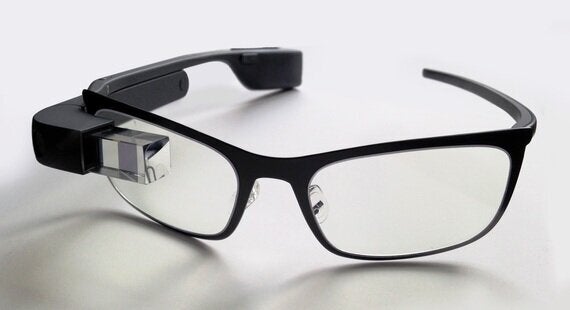
It was during a Metallica gig at O2 Arena in 2008 that I first witnessed a live artist lose patience with the cameraphone brigade - frontman James Hetfield pausing to tell everyone in the immediate crowd to "put your f***ing cameras and phones away, and just enjoy the show ok?".
If I were a member of the Google Glass advertising team I might suggest something like this live admonishment as a decent TV ad opener, then while the offenders sheepishly lower their phones (as they did in real life) we pan sideways to a smiling metalhead casually recording it all unnoticed through the small prism fixed over his eyeball, his hands free to throw a devil's horn or lift aloft his plastic beer receptacle as the next number roars into life.
This of course wouldn't solve what artists are trying to prevent - even more low-grade YouTube footage - as Glass's tiny microphone doesn't do serious justice to anything other than the wearer's own voice (exactly the same problem on that front as standard cameraphones).
But the trump card's right there: hands-free wearable technology which sees what you see, allowing you also to take a photo with a wink of your eye, and issue voice-activated commands for most smartphone tasks - "call mum", "text dad", "who's winning the QPR game?". The necessary info is then right there in your field of vision without you having to move a finger. Say "share" and any video or pic you've taken is uploaded instantly to your Google+ profile.
It all reminded me of a lot of films set in the future: Robocop's infoscreen, the 'Squid' device in Strange Days, and the more recent Her's operating system, as well as the POV sequences in Peep Show and Being John Malkovich.

In reality the user possibilities are many, from people with paralysis to extreme sports practitioners. I'd have loved to have reviewed Glass while on a snowboarding trip or for a recent bungee jump but unfortunately the most radical activities I was able to undertake during my designated days were a bicycle ride and brisk walk through my most recent hometowns, narrating over the scenery like Alan Partridge in tour-guide mode.
It was during these walkabouts that I experienced what users and Google will have to overcome if Glass is to take off beyond this work-in-progress: you get a lot of quizzical looks, unsurprisingly, and some people will just ask you directly what is that robotry on your face. Fine if you don't mind having to halt to explain and demonstrate but not for the self-conscious or paranoid. (My meeting-people video).
For many early adopters though it's not all been nonchalant street chats or conversation pieces with mates - so-called 'Glassholes' in America have been assaulted in public and robbed, prompting many establishments to issue a ban on their being worn. There's obviously the privacy-violation issue of continual filming within confined public spaces - you've 15GB of storage space to play with in that strip of plastic, although the battery life generally doesn't last longer than a day. You could plug yourself into your laptop at Costa via the USB port although you'd be in danger of looking even more like a cyborg.
Google recently pointed out in its defence that cameras were banned in city parks when
they first came on the scene in the late 1800s, over the same privacy concerns cited by Glassophobics ©. But until a newer, heavily-marketed retail version arrives en masse the thorny situation will remain (they'll need to be cheaper too - current version at least a grand).
To end on a positive note though, it was a privilege to try out Glass for a few days as it offered a telling glimpse into the future, albeit one that on this evidence is still a few years away. You look weird wearing it today, as once did hands-free phonecallers in the street who appeared to be shouting at no one, but the day soon arrives when it's weird no longer.
The bleaker conclusion is that there's no doubt that this technology will be miniaturised even further in decades to come, into a contact lens next, or eventually a Total Recall-style brain implant, to complete the fusion of human and machine.
And then, of course, the cerebro-machines will become self-aware... (The Googlinator?) ©
